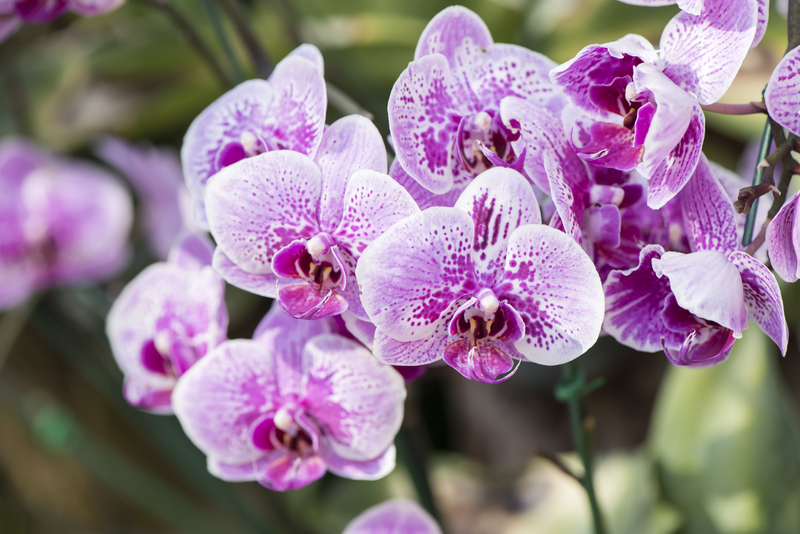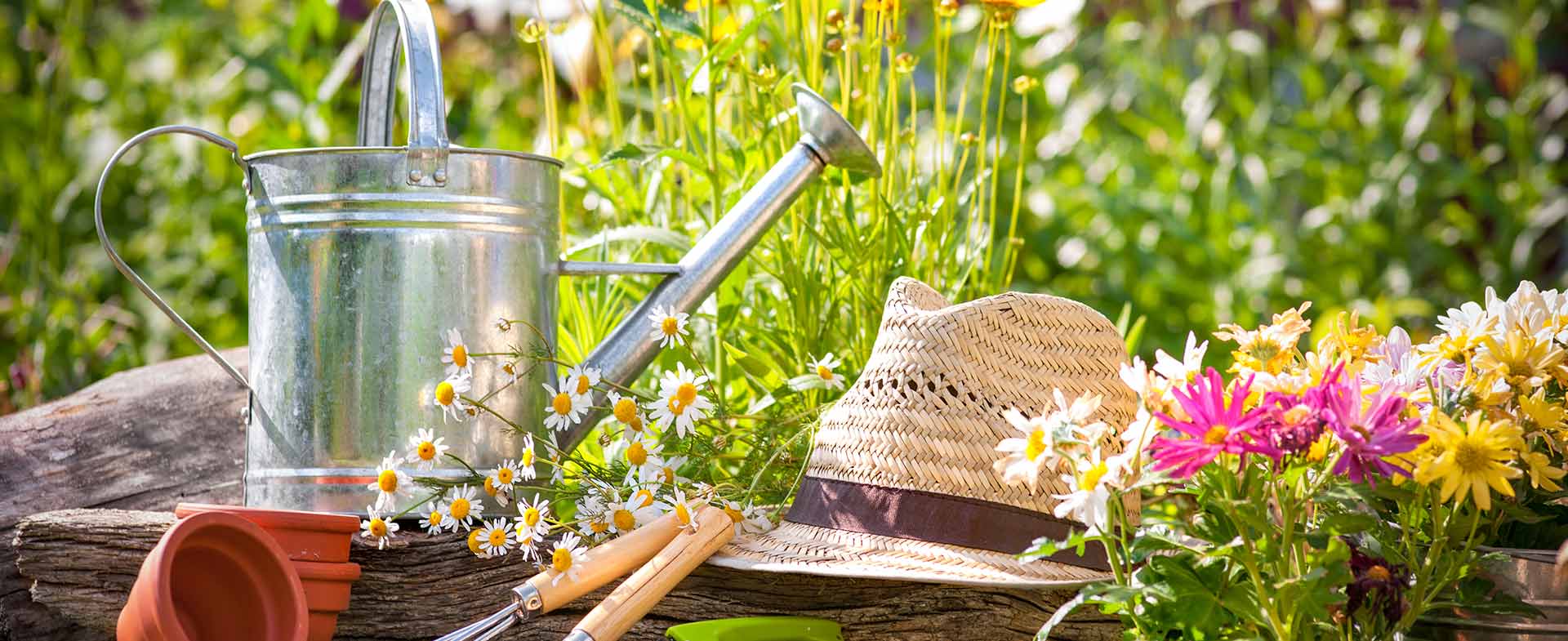Cultivating a Pet-Friendly Garden: Tips for Gardening Alongside Canines
Posted on 15/09/2025
Cultivating a Pet-Friendly Garden: Tips for Gardening Alongside Canines
Gardening is a cherished activity for many homeowners, providing a sanctuary of beauty, relaxation, and sustainability. For dog owners, however, tending to a garden presents unique challenges and opportunities. Creating a pet-friendly garden not only ensures your canine companion's safety but also allows the entire family--including your furry friend--to enjoy the great outdoors together. This comprehensive guide delves into gardening alongside canines, offering practical advice, plant suggestions, and innovative design strategies to build a thriving dog-friendly outdoor space.
Understanding the Needs of Your Canine Companion in the Garden
Dogs, like humans, have instinctual behaviors that may clash with conventional gardening practices. Before embarking on your pet-friendly landscaping journey, it's vital to assess your dog's temperament, size, and habits. Consider the following aspects:
- Digging Instincts: Some breeds are notorious diggers. Terriers, for example, may try to excavate your flower beds.
- Playfulness: Energetic dogs might trample delicate plants while chasing toys or zooming around the yard.
- Chewing Habit: Puppies or curious adults may nibble on greenery--potentially hazardous if toxic plants are present.
- Urine Spots: Dog urine is nitrogen-heavy and can burn grass, leaving discolored patches on your lawn.
Understanding these tendencies forms the foundation for planning a safe garden for dogs that balances their needs with your horticultural aspirations.

Planning and Designing a Dog-Safe Garden Landscape
Mapping Out Canine Paths
Dogs instinctively patrol boundaries and create their own trails. Rather than fighting this behavior, integrate it into your landscaping. Clearly marked paths can direct your pet away from fragile plants. Optimal materials for these walkways include:
- Pea gravel--soft on paws and low-maintenance
- Mulch (choose pet-safe types like cedar or pine)
- Flat stone pavers or stepping stones
Clearly defined routes prevent random dashing through beds and protect both plants and pets.
Designing Play Zones and Resting Areas
Dedicate a portion of the yard as your dog's personal space. Consider features such as:
- Shaded resting spots using pergolas, doghouses, or trees
- Sand pits or designated digging zones filled with soft soil
- Durable, easy-to-clean dog-proof ground covers, such as artificial turf or hardy grass varieties
This pet-friendly landscape design not only keeps your dog entertained but also helps minimize damage elsewhere in the garden.
Choosing the Right Plants for a Pet-Friendly Backyard
Safe Plant Selections
When curating a canine-friendly garden, it's crucial to select specimens that are non-toxic and resilient. Some excellent choices are:
- Sunflowers
- Marigolds (avoid French marigold, as some dogs may have mild reactions)
- Snapdragons
- Roses (thornless varieties preferred)
- Creeping thyme
- Basil, parsley, rosemary (great for dog-safe herb gardens)
- Camellias and aster
Always verify plant safety on reputable resources such as the ASPCA's Toxic and Non-Toxic Plants List.
Avoid These Common Garden Hazards for Dogs
Some popular ornamental and edible plants are dangerous for canines. Be wary of:
- Oleander
- Azalea
- Daffodil and tulip bulbs
- Sago palm
- Foxglove
- Grapevines (grapes and raisins are toxic to dogs!)
If unsure, err on the side of caution and remove or fence off these plants to keep your dog-friendly garden truly safe.
Hardy Groundcovers and Lawns
Choose robust, traffic-tolerant groundcovers to withstand frequent canine activity. Some top picks include:
- Clover--soft, nitrogen-fixing, and resilient to foot traffic
- Lippia nodiflora--low-growing, drought-resistant
- Buffalo grass and fescue blends
- Creeping thyme and Irish moss
A lush, low-maintenance lawn enhances your pet-safe outdoor area and supports comfortable play.
Garden Maintenance and Dog Safety
Pest Control for the Pet-Safe Gardener
Chemical-laden pesticides, herbicides, and fertilizers pose serious risks to pets and wildlife. For sustainable and dog-safe gardening, opt for:
- Organic pest controls (such as neem oil and insecticidal soaps)
- Beneficial insects (ladybugs for aphids, nematodes for grubs)
- Physical barriers like fencing and row covers
- Hand removal of pests where practical
Also, store all chemicals securely--even organic options can be harmful if ingested in large amounts.
Safe Garden Mulches
Avoid cocoa mulch at all costs; it contains theobromine, dangerous for dogs. Instead, use:
- Untreated wood chips (pine, cedar)
- Bark mulch
- Pea gravel or stone chips
These options not only protect your plants but also create comfortable and non-toxic surfaces for paws.
Composting With Canines in Mind
If you compost, keep bins securely lidded and out of your dog's reach. Decaying food scraps, particularly grapes, onions, and moldy items, can be harmful. For a dog-friendly gardening experience, always monitor your pet near compost piles.
Creating Physical Boundaries and Dog-Friendly Features
Fencing and Plant Protection
Sturdy, well-designed fences provide peace of mind, preventing your pup from straying or digging up your prized plantings. Useful options include:
- Picket or lattice fences for larger dogs
- Invisible fencing (if trained properly)
- Raised beds or wire cages for tender or newly transplanted vegetation
Well-placed stepping stones or edging can also deter canine traffic through vulnerable garden areas.
Water Features and Shade Elements
Dogs require regular hydration and protection from the heat. Enhance your pet-friendly backyard with:
- Sturdy water bowls or shallow splash pools
- Pondless water features for safe play
- Strategically planted trees or shade sails for cool lounging spots
These additions contribute both to canine well-being and the aesthetics of your outdoor space.
Training Your Dog to Coexist With the Garden
Establishing Boundaries and Positive Reinforcement
The most beautifully designed garden is only as successful as your dog's ability to respect it. Training is pivotal. Start by:
- Supervising early garden interactions
- Teaching "leave it" and "stay" commands
- Rewarding desired behavior with treats or play
- Discouraging digging in undesired spots with deterrents like canine-safe sprays or chicken wire just below the soil's surface
Consistency is key; over time, your dog will learn to coexist peacefully with your plants.
Dealing With Problem Behaviors
- Digging: Provide a designated digging area filled with soft soil or sand. Hide toys and reward use of this spot.
- Chewing: Offer safe chew toys. Promptly remove your dog from areas where chewing occurs and redirect.
- Urine Spots: Dilute with water, sow hardy grass varieties, or train your dog to use a specific part of the garden.
Enhancing Your Pet-Friendly Garden With Enrichment
Plants and Features That Stimulate the Senses
Incorporate sensory plants and textured pathways to engage your dog's keen nose and paw pads. Consider:
- Herb spirals with dog-safe scents like basil and mint
- Paths lined with soft lamb's ear or non-toxic ornamental grasses
- Sensory "snuffle gardens" for nose work play
DIY Agility and Play Structures
For especially active breeds, build or install:
- Weave poles and jump bars
- Low tunnels or crawling tubes
- Sturdy ramps or small platforms
These additions transform your landscape into a canine wonderland and foster positive behaviors.

Frequently Asked Questions About Dog-Friendly Gardening
Can gardening with my dog help with training?
Yes! Spending time in the garden provides structured bonding and offers myriad opportunities to reinforce obedience and boundary training while exercising your pet's mind and body.
How do I prevent my dog from eating plants?
Supervise garden exploration, redirect chewing to toys, and remove or fence off tempting plants. Training "leave it" commands and positive reinforcement help immensely. Gradually, your dog will learn safe garden habits.
Is mulch safe for dogs?
Avoid cocoa-based mulch, as it's toxic to dogs. Instead, use pine, cedar, or untreated wood chips, stone, or gravel as safer alternatives.
What are the best lawn alternatives for dog owners?
Consider clover, buffalo grass, or artificial turf for durable, low-maintenance, and pet-resilient ground cover. These stand up well to frequent canine use.
Conclusion: Sharing the Joy of Gardening With Your Dog
Cultivating a pet-friendly garden is a rewarding endeavor that enhances safety, harmony, and joy within your outdoor living space. By choosing dog-safe plants, employing smart landscape design, and providing meaningful enrichment, you can enjoy the beauty of gardening alongside your canine friend. Embrace patience, training, and thoughtful planning, and your garden will flourish--welcoming both humans and their four-legged companions in equal measure. Whether you're a seasoned gardener or a new dog owner, these strategies ensure that every day spent outdoors is delightful, safe, and full of lasting memories.

